What do caterpillars eat? Caterpillars make excellent pets, and if you are trying to raise one, you must know what they eat! And, trust us when we say, leaves are not the only things they munch on!

A lily borer caterpillar feeding on sea daffodils.
Chances are, you have seen a creeping-crawling creature along the plants or near the vegetation during the warm summer months. And, if it is a caterpillar, it is definitely in search of something to satisfy its voracious appetite. However, have you ever thought about what these tiny little fellas eat?
Unlike what some children’s cartoons might want you to believe, caterpillars are not a huge fan of processed food. Caterpillars rely on nature to get their food, and most caterpillar species are strictly vegan. Nearly all caterpillars eat plants, whether they are moth caterpillars or butterfly caterpillars.
Different species of caterpillars prefer to eat on specific plants that are called host plants. You can also find a list of some of the most common caterpillar host plants in the table given at the end of this article.
You will also be amazed by the peculiar eating habits of some caterpillar species that do, in fact, seem like something straight out of children’s cartoons.
Nonetheless, you will find that most caterpillars feed on leaves. However, caterpillar food is not just restricted to leaves. Many species of caterpillars eat seeds, while still some other species of caterpillars eat flowers. In fact, there is this one caterpillar that decorates itself with flower petals to camouflage.
So, let’s go ahead and find out more about what caterpillars feed in a bit more detail!
Generalist Caterpillars Vs. Specialist Caterpillars
Depending on how picky a caterpillar is about its diet, caterpillars can be divided into two groups. Generalist caterpillars have a broad range of host plants. These caterpillars will happily feed on several food plants within their range of native plants.
For example, black swallowtail caterpillars feed on parsley, dill, Queen Anne’s Lace, fennel, and carrots. Similarly, sphinx moth caterpillars and some other moth caterpillars have many host plants, including both woody and nonwoody species.
On the other hand, specialist caterpillars restrict their feeding activities to a small group of related plants. For instance, the milkweed tiger caterpillar only feeds on milkweed plants, and peacock butterfly caterpillars only feed on certain types of nettle plants.

A milkweed tiger moth caterpillar feeds exclusively on milkweed plants.
Carnivorous Caterpillars
Some types of caterpillars are carnivorous too. These caterpillars usually eat insects. They hide amongst dead leaves and wait for any soft-bodied insects that are unlucky enough to pass by. Here is a link to a video of a caterpillar catching and eating a fly:
How Carnivorous Caterpillars Attack Their Prey
Then there is the Ceratophaga vicinella, a rather unusual moth caterpillar. This caterpillar specializes in eating the shells of dead gopher tortoises. These shells are made of keratin, one of the most challenging things to digest on a carnivore’s menu.
Omnivorous Caterpillars
The rosy marbled moth caterpillar is truly an omnivorous creature. When it is young, it feeds on colorful flower petals, but it starts feeding on dead and live insects as it grows. But, that is not all; these caterpillars will even sometimes turn to cannibalism if they become too hungry!
The beloved Monarch caterpillar is also an occasional cannibal, feeding on eggs and larvae of fellow monarchs.
Top 3 Caterpillar Host Plants
There are more than 200,000 described species of butterflies and moths in the world today. The larval stages, i.e., caterpillars of these moth and butterfly species, more often than not, feed on the same basic food plants. Some species, however, might prefer certain plants over others.
Nonetheless, if you want to build a true butterfly garden, simply having some nectar plants won’t cut it! A well-designed butterfly garden must also have something to offer for the young caterpillars that prefer to eat leaves and other parts of plants rather than their nectar.
So, here are the top 3 caterpillar food plants you must have in your garden:
1. Oak leaves

Oak plants are indeed a universal caterpillar food, supporting more than 500 types of caterpillars.
Not all plants and trees provide equally for caterpillars. Some plants support greater numbers of caterpillars than others. However, the mighty oaks surpass them all. Oaks serve as host plants for more than 500 butterfly and moth species and their caterpillars.
These include inchworm caterpillars, dagger moth caterpillars, and numerous species of silkworm caterpillars.
So, if you are raising caterpillars and they are being fussy about what they eat, try giving them some oak leaves. Also, keep in mind that they stop feeding when caterpillars are about to pupate.
And, if you find a caterpillar during this stage of its life, it might not be interested in your food at all. So, it is just better to leave it alone!
2. Nettles

A stinging nettle slug caterpillar on a nestle plant.
When a plant has got common names like stinging nettle and burn nettle, it is evident that people generally do not like it. However, despite what we say about nettle plants, they are one of the best food sources for hungry caterpillars.
Many species of butterflies and moths lay eggs on nettle plants. When caterpillars hatch, they have a readily available food source at their footsteps.
So, next time you are around nettle trees, wear protective gloves and have a look around. You never know what species of caterpillar you might find there!
3. Grasses
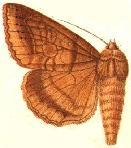
The larva of striped grass looper is a significant pest of bermuda grass.
The larval stages of some of our most beautiful butterflies feed on widespread species of grasses. Some of these caterpillars are commonly known as lawn caterpillars. Examples include striped grass looper and tropical sod webworm.
These caterpillars are stealth attackers; they hide during the day and come out at night to chew on grass.
RELATED: Furry Caterpillar Types with An Identification Guide, Fun Facts, and Pictures
Other Hungry Caterpillar Foods
1. Flowers

Cuckoo flowers are a particular favorite of orange tip caterpillars
For some caterpillars, leaves just do not cut it! For example, the Star-worth caterpillar loves munching on fresh flower petals of sea aster. Similarly, the orange tip caterpillar feeds on cuckoo flowers.
2. Leaves

A hickory tussock moth caterpillar sitting on a leaf.
Most caterpillars eat leaves to satisfy their appetites. Also, unlike other insects, caterpillars do not drink water. Therefore, they have to fulfill all of their water requirements through their food. And since leaves are filled with water, a caterpillar would happily munch on them.
Other than oak leaves, cherry leaves, willow leaves, and apple leaves are favorites of caterpillars. So, if you are looking to feed caterpillars, you cannot go wrong with leaves!
3. Honeycomb
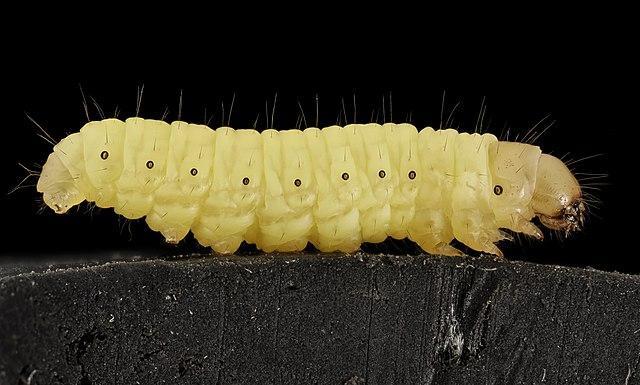
A wax moth caterpillar.
Although caterpillars do not eat lollipops, some are still big fans of sweets. For example, the wax moth caterpillar invades beehives and lays its eggs in the honeycombs. When the eggs hatch, they start ruthlessly feeding on the honeycomb.
Their caterpillars can be quite devastating as honey bees do not usually notice them amongst their own larvae.
4. Hair, Fur, And Feathers
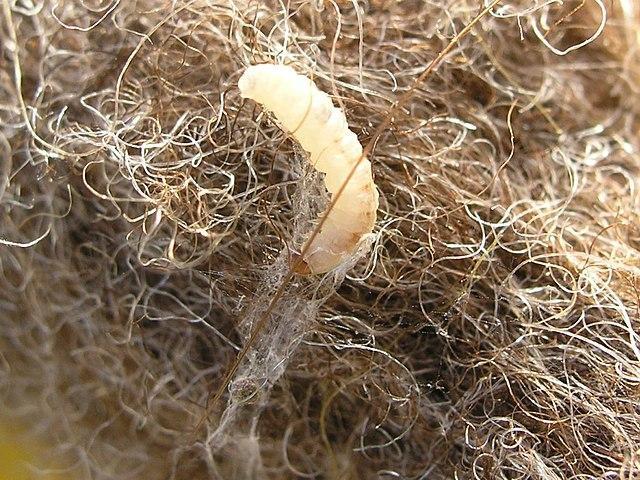
The larval form of a clothing moth caterpillar
Unlike what most people think, not all caterpillars eat or damage clothes. However, some species enjoy eating hair and natural animal fibers. For instance, the common clothes moth caterpillar has a habit of eating on wool stored in most households.
5. Moss And Lichen
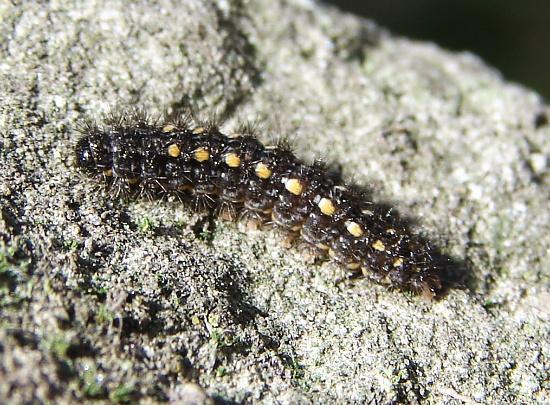
A scarce footman moth caterpillar frequently feeds on moss.
You may have seen lichen growing on fence posts, tree trunks, old walls, and decaying vegetables and fruits. Some types of caterpillars eat on this too. For example, the caterpillars of scarce footman moths eat on moss very frequently. They have also been known to munch on lichens occasionally as well.
6. Fruits And Vegetables
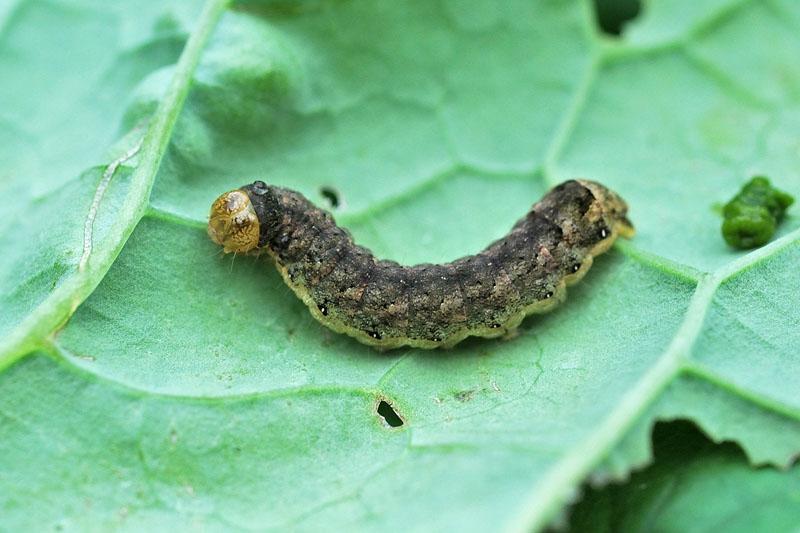
A cabbage moth caterpillar is a significant pest of brassica vegetables
Besides leaves and flowers, caterpillars also love feeding on vegetables and fruits. In fact, some caterpillars can be a significant pest of commercially grown fruit and vegetables. Since these plant parts are generally rich in nutrients, it might help caterpillars grow even faster!
Commonly consumed vegetables and fruits include pear, apples, bananas, cabbage, cab corn, etc.
7. Ants

The large blue butterfly -an endangered species whose caterpillar feeds on ant grubs
No caterpillar comes even close in the uniqueness of feeding habits than the caterpillar of Large Blue Butterflies. The caterpillar starts its life by feeding on flower heads of wild thyme. After a while, it falls to the ground and emits a scent that attracts unwitting ants.
These ants will then take it to their nest, where these caterpillars eat ant grubs before pupating underground.
Bark And Twigs

The caterpillar of hornet moth caterpillar lives inside and feeds on living wood
Only a few species of caterpillars consume hardwood like twigs and bark. For instance, the caterpillars of the Lunar hornet moth bore into trees. Here, they feed on living wood for around two years. Also, there is no need to be afraid of them.
They usually do not cause much damage to trees, and even though they have the word “hornet: in their names, they do not sting!
RELATED: Types of Green Caterpillars with Fun Facts, Stunning Pictures and Loads More!!!
Host Plants Of Some Common Garden Butterflies
| Butterfly | Host Plants |
| Painted Lady | Calendula, hollyhock, mallow, sunflower, and thistles |
| Peacock butterfly | Frog fruits and smooth water hyssop |
| Comma butterfly | Nettles, elms, and hemp |
| Red Admiral | False nettle, stinging nettle, and pellitory |
| Tiger Swallowtail | Tulip, wild black cherry, and sweet bay Magnolia |
| Cabbage White | Broccoli, cabbage, collard, mustard, and peppergrass |
| Mourning Cloak | Willow, poplar, hackberry, elm, birch, etc. |
| Viceroy Butterfly | Willow, cottonwood, and poplar |
| Brush-footed butterfly | Violet, elm, poplar, willow, nettles, thistle, hackberry, and milkweed |
| American Snout butterfly | Hackberry and southern sugarberry |
Frequently Asked Questions
Do Caterpillars Feed Fruit Or Vegetables?
They can eat both, although different species might have different preferences. In fact, some caterpillar species are significant pests of fruits and vegetables. And if their numbers are not kept in check, they can cause considerable economic losses to the agricultural industry.
Do Caterpillars Eat Lettuce?
Caterpillars eat lots of greens! However, lettuce is not the best food for these creeping crawling creatures because of its not-so-good nutritional value. Nonetheless, lettuce is an excellent way of keeping the caterpillars hydrated as caterpillars get all of their water from their food.
How Many Leaves Does A Caterpillar Eat?
A large Monarch caterpillar can eat as many as ten to twelve days in a single day. However, not all caterpillar species are that hungry. Most caterpillar species only eat around one large leaf a day, and they do not even consume the leaf altogether. Instead, they frequently move from leaf to leaf, drilling small holes and leaving hard veins intact.
How Many Days Can A Caterpillar Go Without Food?
It all comes down to the age of the caterpillar. Young caterpillars can’t last very long if they are not given enough to eat. However, a large and mature caterpillar can live for about a week without food. However, if you raise a caterpillar, make sure it gets enough fresh food every day. It is because these caterpillars need to collect all the energy they can before pupating.
Sources For Further Reading
- Food for Caterpillars – Garden for Wildlife | National Wildlife Federation. (2022). Retrieved 1 April 2022, from https://www.nwf.org/Garden-for-Wildlife/Food/Food-for-Caterpillars
- What do caterpillars eat? (Cali, 8). Retrieved 1 April 2022, from https://carleton.ca/biology/cu-faq/what-do-caterpillars-eat-cali-8/#:~:text=Almost%20all%20caterpillars%20feed%20on,accessible%20part%20of%20the%20plant.
- Questions and Answers about Caterpillars and Grasshoppers. (2022). Retrieved 1 April 2022, from https://extension.psu.edu/questions-and-answers-about-caterpillars-and-grasshoppers
Now that we know what do caterpillars eat, read our other articles about different plant bugs:
Editor’s Recommendations
Spider Mites on Houseplants: How to Identify and Manage Them?
Black Beetles 101: Types and A Comprehensive Identification Guide with Pictures
Black Caterpillar Types: How to Identify Common Species, Fun Facts and More!







